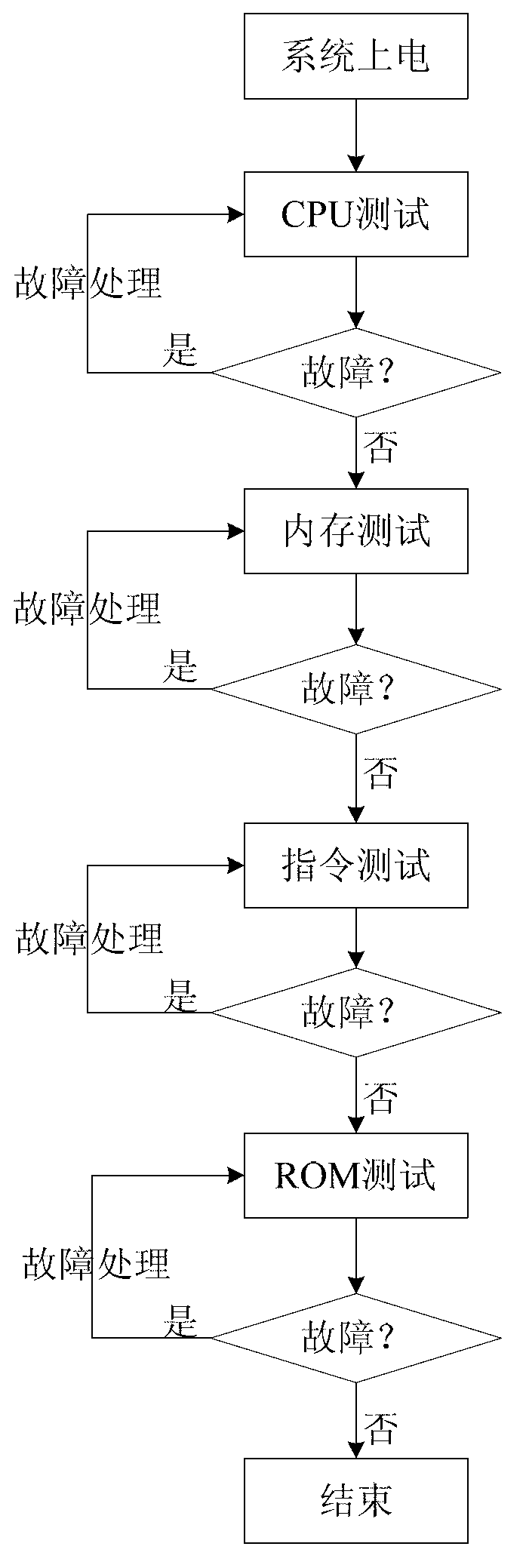Embedded system power on self test method
An embedded system and integrity detection technology, which is applied in the detection of faulty computer hardware, etc., can solve the problems of not considering the influence of other component systems, not considering the detection coverage, and not fully representing the operating status of the equipment, etc., to achieve applicable Wide range, low cost and high execution efficiency
- Summary
- Abstract
- Description
- Claims
- Application Information
AI Technical Summary
Problems solved by technology
Method used
Image
Examples
Embodiment
[0025] Such as figure 1 As shown, an embedded system power-on self-check method includes the following steps:
[0026] 1) The system is powered on, and the CPU register is checked during the initialization phase to determine whether the CPU register is faulty, if it is, then the fault is handled, if not, then go to step 2);
[0027] 2) The cross-position method is used to detect the memory to determine whether the memory is faulty, if it is, then the fault is handled, if not, the system will initialize other peripherals (initialize the driver, load the driver device program, discover the device, etc. Operation), such as a FLASH controller, and then perform step 3);
[0028] 3) Classify the instructions used by the system, test each type of instruction separately, and compare the test result with the expected test result vector to determine whether all the instructions pass the test, if yes, go to step 4), if not , Then troubleshoot;
[0029] 4) When the file system components are ava...
PUM
 Login to View More
Login to View More Abstract
Description
Claims
Application Information
 Login to View More
Login to View More - R&D
- Intellectual Property
- Life Sciences
- Materials
- Tech Scout
- Unparalleled Data Quality
- Higher Quality Content
- 60% Fewer Hallucinations
Browse by: Latest US Patents, China's latest patents, Technical Efficacy Thesaurus, Application Domain, Technology Topic, Popular Technical Reports.
© 2025 PatSnap. All rights reserved.Legal|Privacy policy|Modern Slavery Act Transparency Statement|Sitemap|About US| Contact US: help@patsnap.com

